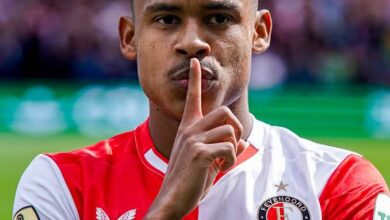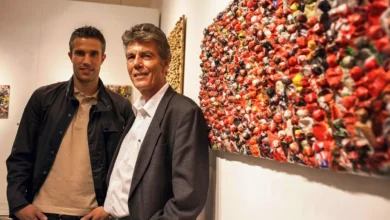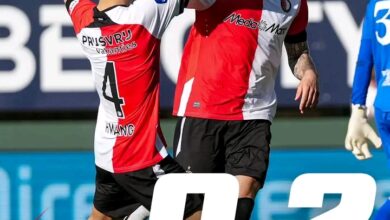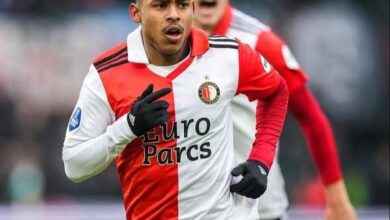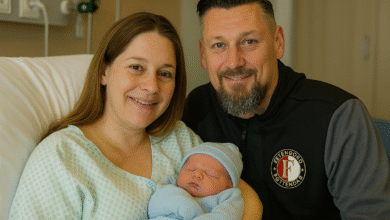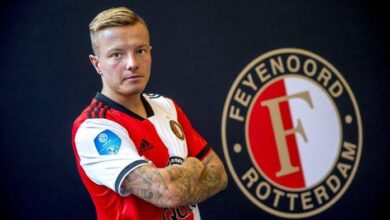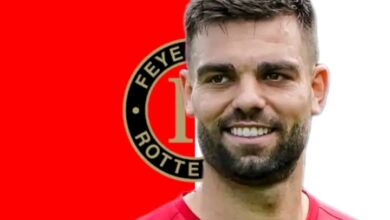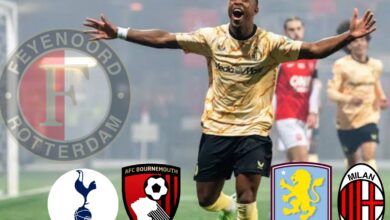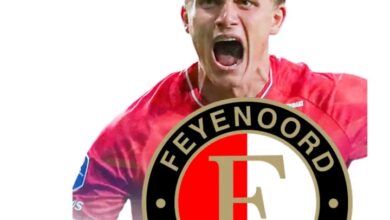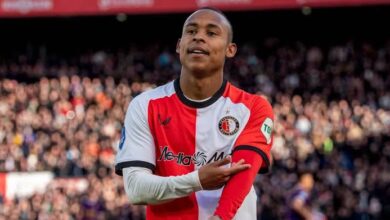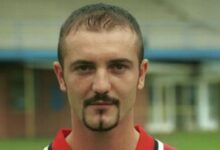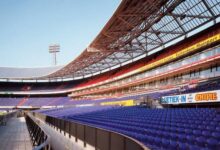Just in ; FC Twente – Feyenoord wedstrijd geannuleerd vanwege geplande rellen
FC Twente - Feyenoord wedstrijd geannuleerd vanwege geplande rellen

FC Twente – Feyenoord wedstrijd geannuleerd vanwege geplande rellen
Enschede, 9 maart 2025 – De langverwachte Eredivisie-topper tussen FC Twente en Feyenoord, die gepland stond voor zondagavond in De Grolsch Veste, is op het laatste moment geannuleerd door de lokale autoriteiten. De reden: concrete aanwijzingen voor een geplande grootschalige rel tussen rivaliserende supportersgroepen.
Dreiging al dagen voelbaar
Volgens de politie en de gemeente Enschede was de dreiging van supportersgeweld al dagen zichtbaar op sociale media. Er werd gesproken over confrontaties tussen harde kernen van beide clubs, zowel in het centrum van de stad als in de buurt van het stadion. De autoriteiten gaven aan dat er aanwijzingen waren voor de aanwezigheid van vuurwerk, wapens en zelfs flessen met brandbare stoffen.
Burgemeester Roelof Bleker van Enschede nam, in overleg met de politie en de KNVB, de beslissing om de wedstrijd af te gelasten. “De veiligheid van supporters, spelers en omwonenden staat voorop. We konden het risico niet nemen dat deze wedstrijd zou uitmonden in een grootschalige veldslag,” aldus Bleker.
Politie schroeft beveiliging op
De politie in Enschede en omliggende steden had zich al voorbereid op mogelijke rellen. Extra eenheden uit andere regio’s waren opgeroepen om de situatie onder controle te houden. Ook de ME (Mobiele Eenheid) stond paraat.
“We hebben de afgelopen dagen veel berichten onderschept waarin groepen hooligans afspraken maakten om de confrontatie met elkaar aan te gaan. Dat, in combinatie met eerdere incidenten tussen deze supportersgroepen, gaf ons geen andere keuze dan een harde lijn te trekken,” zei een woordvoerder van de politie.
Twente en Feyenoord reageren teleurgesteld
FC Twente en Feyenoord hebben teleurgesteld gereageerd op het besluit, maar tonen begrip voor de veiligheidsmaatregelen. Twente-directeur Jan-Willem Brüggenwirth zei: “Dit is een zwarte dag voor het Nederlandse voetbal. Voetbal hoort een feest te zijn, geen aanleiding tot geweld. Wij betreuren het dat het gedrag van een kleine groep mensen nu zorgt voor de annulering van een prachtige wedstrijd.”
Ook Feyenoord-trainer Arne Slot gaf aan teleurgesteld te zijn: “Wij hadden ons enorm verheugd op deze topper. Het is spijtig dat dit soort zaken het voetbal in Nederland blijven overschaduwen. We hopen dat de verantwoordelijken worden opgespoord en bestraft.”
KNVB zoekt nieuwe speeldatum
De KNVB onderzoekt nu de mogelijkheid om de wedstrijd op een later moment in te halen. Dat blijkt echter lastig vanwege het drukke speelschema van beide clubs. “We zullen alle opties bekijken, maar veiligheid blijft de absolute prioriteit,” aldus een woordvoerder van de voetbalbond.
Supporters verdeeld over beslissing
Onder de supporters zijn de reacties gemengd. Veel fans begrijpen het besluit en vinden veiligheid belangrijker dan de wedstrijd, maar er zijn ook boze reacties. Vooral Twente-supporters die al kaarten hadden gekocht en zich hadden voorbereid op een intense voetbalavond, voelen zich benadeeld.
“Waarom moeten duizenden normale supporters lijden onder een kleine groep relschoppers? Ze moeten die mensen oppakken in plaats van de wedstrijd af te gelasten,” reageerde een teleurgestelde Twente-fan op Twitter.
Anderen vinden dat de autoriteiten juist correct hebben gehandeld. Een Feyenoord-supporter schreef: “We willen geen situaties zoals in Frankrijk of Italië, waar supportersgeweld steeds erger wordt. De politie heeft het juiste gedaan.”
Toekomstige maatregelen
De gemeente Enschede, de politie en de KNVB zullen de komende weken bespreken hoe soortgelijke situaties in de toekomst voorkomen kunnen worden. Mogelijke maatregelen zijn strengere toegangscontroles, het verplaatsen van risicowedstrijden naar eerder tijdstippen, en een nog harder optreden tegen bekende relschoppers.
Voor nu blijft de vraag: wanneer en onder welke omstandigheden zal FC Twente – Feyenoord alsnog worden gespeeld? De supporters zullen voorlopig moeten wachten op een nieuwe datum voor deze beladen ontmoeting.

